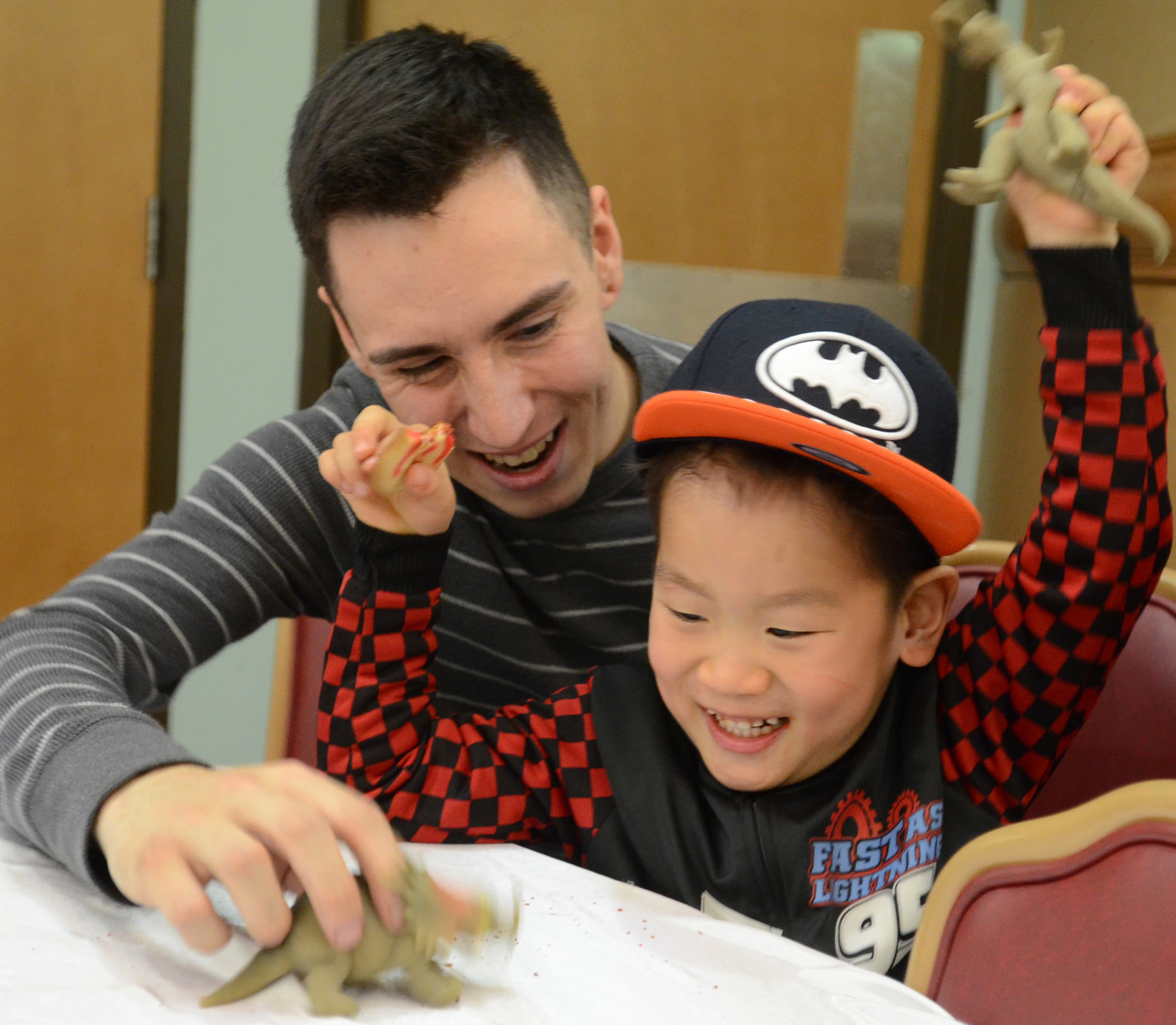Adoption is a valuable alternative to having a biological child for those who cannot or do not want to conceive or give birth, those who do not want to worsen the issue of overpopulation, or those who place value in raising a child that has no caregiver. Adoption is also a crucial alternative for many parents around the world who do not have the right resources to raise their child or who can no longer provide adequate care for them. Whether your plan is to adopt or to put your child up for adoption, your decision will shape the outcomes of both your and the child’s lives. We hope to lay out the major considerations and steps to this process.
Table of Contents
Adopting a Child
If you are thinking of adopting a child, it is important to understand that this decision will be just as significant as bearing your own child. Even though they may not be you biological child, after adoption, you will be their guardian and will legally be held responsible for their well being. The following is a list of questions you may want to consider as you decide if adoption is right for you:

- Why do I want to adopt a child?
- Am I able to handle the commitment involved in adoption and parenthood, including financial responsibility, time management, stress, work, and other unexpected issues that may arise?
- Will I be able to accept that my child is not biologically related to me?
- What kind of adoption might I want?
- Do I have a preference for my child’s gender? If so, what gender do I prefer?
- What age do I want my child to be? Do I have a preference?
- Is the ethnicity of my child an important factor to me? If so, what type of background would I want my child to have?
- Would I open to raising a child that has special needs?
- How will I approach my partner, family, and friends about the topic of adoption?
- Would my partner be open to adopting a child as well? How do my partner’s opinions on the adoption process and parenthood compare to mine?
- If I already have children (or my partner already has children), how will adopting a child affect our family?
- If need be, how and at what age will I discuss the topic of adoption with my (adopted) child?
- How would I feel about my child wanting to know more about their biological background, including information about their birth parents? How would I approach the topic?
- Do I have proper support systems in place to help me work with any potential problems that may arise?

These are just a few of the considerations that one should take into account when looking to become an adoptive parent. As you ask yourself these questions, it is often helpful to you’re your partner, relatives, or close friends to assist you and advise you. Deciding whether or not you should adopt a child is not an easy task and it is crucial to weigh out and anticipate both the positive and negative aspects of adoption. Knowing that you are helping a child leave foster care may be a very rewarding experience, but you need to be sure that you will be able to raise your child in a supportive, stable home. If you have thoughtfully considered all of these factors and have decided that you want to follow through with adopting, below are some steps to help you get started.
Steps to Adopting a Child
Adopting a child is a time consuming, complex process. Depending on the agency and the country, the adoption process may be slightly different. The following are general steps that may help guide you through the process.
- Take time to thoroughly think about your decision
- Carefully contemplate the responsibilities, pros and cons, and commitments that revolve around raising anadopted child and decide if you are ready for this commitment.
- Try talking to other adoptive parents and to children who have been adopted to learn about their experiences.
2. Educate yourself by doing research.
- Each country has its own adoption laws and policies.2 Do some research to make sure you qualify and can comply to your state’s or country’s adoption licensing requirements. If you live in the United States, AdoptUsKids.org is a resourceful website that can help you get started.
- Look up personal stories and tips from caregivers who have already gone through the process and see what advice they have to offer.
3. Contact a local agency.

- Local agencies can be both public and private. Public agencies are generally free, inexpensive, or may bereimbursable (you should ask each agency about reimbursement procedures and charges before you use their services). 3 If you live in the U.S., you may be advised to become licensed to foster before adopting even though you may not be interested in permanent foster care.3 It may expedite your adoption process because it streamlines procedures, avoids delays, and recognizes that most children who are adopted from child welfare are adopted by their foster parents.9
- Private adoption agencies can also aid you with the adoption process, but you will likely have to pay for their services, although some or all fees may be reimbursable.3 (Again, you should ask each agency about reimbursement procedures and charges before you use their services) These services could include completing a home study, providing training, helping you find and secure a placement, identifying or providing support services after adoption.3
4. Attend an orientation.3
- Agencies are likely to suggest attending an orientation that will inform you about choosing a child, the duties of adoptive or foster parents, the process of adoption (including paperwork, legalities, etc.), and the next steps you need to take in order to become an adoptive parent.3
- Make sure to be attentive and voice all concerns and questions when attending these orientations and working with the agency you contacted. If at anytime you decide that adoption is not be something you are ready to take on, do not feel pressured to follow through – these orientations exist to keep you informed about whether or not adoption is right for you.
5. Request to be contacted by an adoption professional in your state.4
- In the U.S., AdoptUSKids.org is a great website to help you get started with this step.4 Once you sign up, a professional from an adoption agency will contact you and help you start your process of adoption as well as answer any questions or concerns you have and direct you to the resources you need to complete the next steps of the procedure.
6. Meet the children and learn about them before you adopt!

- This is a highly important step because the relationship you form with this child will lay the foundation for both the child’s and your own future. Meeting the child first will allow you to determine whether the two of you are a good match and have the potential to develop a meaningful connection. Keep in mind, however, that first impressions are not always accurate, and that building meaningful relationships takes time. Avoid setting your expectations too high for the “perfect” child when you meet them. This step exists to maximize your chances of being satisfied with your choice, of having a successful adoption, and of finding a child that will be a good fit for you. If you set unrealistic expectations for your child, this step may make the process more complicated.
- Look into background information about the child before you adopt. If the child has a disability, ask yourself if you have the resources and the desire to provide the proper care for the child. If they have a history of depression or anxiety, do you feel able to provide a warm, supportive home for the child to cope with these issues? If the child has a criminal record, will you be able to empathize with the child, and help them grow into a more civil and contributive member of society?
7. Finalize the adoption process.
- This step usually involves signing a series of legal documents and choosing an official date to move your adopted child into your home. Make sure you clearly understand all of the terms, conditions, and legal circumstances you are signing up for. If you do not feel confident analyzing these documents on your own, consider contacting an attorney or lawyer to help you go over these papers and understand the legal rights you have in this process. You will most likely have to pay for the services the attorney or lawyer offers and therefore, it would be a good idea to know your budget before directly hiring a legal professional.
8. Welcome your new child into your home.
- This can be the most exciting step as well as the most anxiety-provoking step. Before the move in day, have a room or an area set up specifically for your child where they can stay the very first day they arrive. Whether you want to furnish and decorate the room before or after they arrive is up to you, your child, and/or your partner. It would be very thoughtful of you to ask your child what they want their room to look like so that you can work together as a family to make the room comfortable for them. Deciding on how to furnish and decorate the room as a family can be a great bonding activity to get to know one another on the first day.
- Being a parent is exciting, rewarding, fun, stressful, and difficult all at once. It is normal to experience ups and downs during this process. If you are struggling, do not hesitate to reach out to your partner, family, friends, or local facilities (such as counseling centers, your adoption center, teachers, etc.) with your problems. You are not in this alone and there are many resources and organizations out there that can help you!

Putting a Child Up for Adoption
Disclaimer: Throughout this article, we will be using the term “woman” or “women” to describe biological females who can become pregnant. We understand that not all biological females are able to become pregnancy and carry a child to term. We also understand that biological sex and gender identity are separate. But for the sake of simplicity and consistency, those are the terms we will be using. If you would like to learn more about gender identity, visit our Sexual Orientation and Gender Identity article. If you would like to learn more about infertility, you can read our Male Infertility and Female Infertility articles.

An unplanned pregnancy is an overwhelming experience for most women. If you have chosen to carry the child to term because of personal or religious reasons, there are other options to consider if you feel you cannot provide a loving, stable, supportive home for the child. Adoption is a viable option for many females who do not wish to or cannot terminate their pregnancy, but also cannot provide a good home for their baby. There are many reasons why a woman may feel she is not ready to raise a child: financial problems, time restraints, unstable lifestyle, or lack of a support system. These are just some of the factors that can make caring for another person even more difficult. It is important to make a list of all of your options to and be honest with yourself about the limitations you may have as a parent. The following are examples of some questions you may want to consider:
- What are your long-term and short-term goals for the future? Can these goals be accomplished if you are a
parent? If not, are you willing to adjust your plans and do you think you will be happy with your decision? - Are you financially capable of supporting another person? Are you aware of the cost of raising a child?
- Are you dealing with any personal issues, including issues related to your mental and physical health (e.g. depression, anxiety, long-term or severe, debilitating illness)? Will you be able to raise a child while coping with these issues?
- Can you, your significant other, and/or your family handle the responsibility of caring for a baby 24 hours a day?
- How will bringing this child into your home affect your close relationships?
Answering these questions can help you decide what the right choice is for you. Realizing that you are not the only person affected by this decision should also factor into the choice that you ultimately make. The next section will help you understand what steps to take if you wish to give your child up for adoption.
Steps to Putting a Child Up For Adoption
Putting your child up for adoption can be a stressful, time consuming, and complicated process. The following steps are intended to help guide you through your process.
- Thoroughly think about your decision

- Think carefully about this decision and how it will affect your life, both in and the near future and in the long term. Ask yourself the questions listed above and weigh the positive and negative aspects of adoption. Once you officially give your child up for adoption, it may be very difficult to contact your child or try to gain back custody of your child, depending on which type of adoption it is (refer to the next step for more information). Know that this decision will greatly affect your and your child’s lives.
- Examine alternatives to adoption and consider if one of these alternatives is something you would be interested in pursuing. For example, do you have a close family member or a loved one who is able and willing to take care of your child while still letting you be a part of your child’s life? Would you prefer to let a family member or close friend raise your child rather than let a stranger adopt them? What would the pros and cons of choosing this alternative option be?
- If you are having trouble deciding alone, try talking about it with your partner, your family, trusted friends, or an adoption center and ask for their advice. If you are located in the U.S., the organization Lifetime Adoption has a hotline that you can call or text anytime if you have any questions or need help exploring your adoption options: 1(800)-923-6784.7
2. Decide which type of adoption you would like to have. If you choose to carry on with the adoption process, there are different kinds of adoption you can choose from:
- Closed or Confidential Adoption: This kind of adoption is put in place to ensure birth parent’s privacy as well as protect the children from social ridicule.5 This is the option that is generally portrayed as the standard type of adoption in films and the media, where the adoptive parent takes a child into custody and permanently becomes the guardian of this child without having to keep in touch with their birth parents. In this case, the child does not have a relationship with their birth parent(s). The biological parents’ record can only be accessed if there is a court order obtained.6 Oftentimes, the information and identity of the birth father is not recorded, not even on the original birth certificate.6 If the child is older and already knows their birth parent(s), the birth parents’ identity cannot be kept private. If you are an individual who has been put up for adoption or if you have put your child up for adoption and later wish to connect with your biological parent or child, there are many non-profit organizations and private companies that are willing to help people in closed adoptions to reunite with their biological relatives.6
- Open Adoption: Here, the birth parents and adoptive parents keep in contact with each other. This has become more common in recent years. The amount of openness varies greatly depending on the adoption.3 The conditions of your arrangement will be clearly stated and agreed upon by both you and the adoptive parents before your child officially becomes adopted.
- Semi-Open Adoption: This is a mediated form of contact and communication between the parents.4 Third parties like a adoption agencies or attorneys usually serve as the mediators. This option is very similar to an open adoption, but it is more strict in terms of making sure both parties are following the agreement that was initially agreed upon. For this option, both parties are also more likely to be corrected if they do not uphold their agreement since the adoption is being mediated by an agency official or legal advisor.
Understanding the different options and procedures will better help you find the option that will work best for you. The major difference between these options is whether or not you will be permitted to keep in contact with your child and under which circumstances you will be able to do so. Thoughtfully consider the pros and cons of keeping in touch with your child while they are under another family’s care before you finalize your choice.
3. Do your research and visit local adoption centers before choosing a facility.
- Every adoption center does not follow the same policies and conditions – do extensive research before putting your child under a facility’s care. Visiting an adoption center and speaking with the staff there can usually give you a good sense of what they stand for and if they will be sensitive to your child’s needs and take good care of them. Choosing a well-established facility over a poorly organized facility will have a great impact on your child’s future and well being. Reach out to as many of these potential adoption centers as you can and do not hesitate to ask questions. You can also try to find reviews of each adoption center or contact parents that have used that agency and ask them about their experience.
- Know the process and policies of each adoption center. Some adoption organizations will allow you to choose which family you want to adopt you child. If you are located in the U.S., Lifetime Adoption is an organization that allows you to get in touch with potential adoptive parents and even meet them to determine if you are comfortable leaving your child under their care.7 Not all adoption centers will give you this option so be sure to get in contact with as many local adoption organizations as you can to compare your options.
4. Contact and cooperate with the adoption agency you decide on.
- Once you have done your research and weighed out your options, contact the agency you have decided to work with and make sure you address all of your concerns and needs with them all throughout the process. If at any time there is something that you are having trouble with or that is bothering you, do not hesitate to voice your concerns with the agency. The best time to settle all of your questions and uncertainties is before you sign any documents or agree to any terms.

5. Consult with an attorney or lawyer before signing documents
- You have the right to talk with an independent attorney before signing any forms.8 To avoid confusion and misunderstandings, it is advised to have a legal worker read over your forms with you and help you clearly understand what you are agreeing to. You will likely have to sign a consent form with the adoption agency before you finalize the adoption process. It is crucial to thoroughly understand all parts of the documents before giving your consent to adoption agencies to take over care of your child.
6. Finalize the process and give yourself time to get back on track with your life.
- When you are ready, finalize the adoption by signing any forms you are required to complete. This step usually involves choosing a date to transfer your child to the adoption facility or to another family. This can be a very emotional and difficult step for many people. Please know that there are resources out there to that can help you cope with these difficulties, such as counseling centers, therapy centers, social work agencies, or adoption centers. If you start to second question your decision once you have completed this step, try to remind yourself of all the reasons why you wanted to carry out the adoption in the first place. Remember that you had valid reasons to transfer your child to another family’s care and have faith that you made the right decision for yourself and your child in carrying out the adoption.
- After this process is completed, you may experience a period of time where you feel confused, empty, or unsure of what to do next.10 This is a good time to look back at your life before you became pregnant and reflect on the short-term and long-term goals you set for yourself. Did you decide to put your child up for adoption because you wanted to attend college or focus on your career? If so, now would be a good time start planning out how to accomplish those goals. It is normal to feel grief for a period of time after this process. If you feel that this transition period carries on for an extended amount of time or if you are experiencing depression, anxiety, grief, or excessively negative thoughts and emotions, reach out to the resources available to you. Don’t hesitate to reach out to counseling centers, therapy centers, adoption centers, or social work agencies to help you with your process. Talking to women who have also put their children up for adoption can be extremely comforting and helpful. You are not alone in this and reaching out to the right people can help direct your life in a much more positive direction.
Concluding Remarks
We hope that this article useful in helping you navigate throughout the adoption process. As a final note, we would like to address that at any time during this process, if you change your mind and decide that you no longer want to follow through with the adoption process, do not hesitate to back out. You should not feel pressured into thinking adoption is the only option or the right option for you. If you are feeling hesitant throughout this entire process, perhaps this is a sign that adoption is not the right choice for you.

No matter what you decide to do, trust your instincts and always keep in mind that you are not alone in this process—there are many resources available that can help you, such as your loved ones, adoption facilities, and social work agencies. However this process plays out, we wish you the best during this process and we trust that your final decision will lead you to the best possible outcome for your life.
References
- “International adoptions in decline as number of orphans grow.” CNN, 23 Jan. 2017
- “Adopting from Foster Care.” Adoptive Families, 23 Jan. 2017
- “Getting Started. ”Adopt US Kids, 23 Jan. 2017
- “Adoption & foster care-Request to be contacted.” Adopt US Kids, 23 Jan. 2017
- Ge, Xiaojia et al. “Bridging the Divide: Openness in Adoption and Post-Adoption Psychosocial Adjustment among Birth and Adoptive Parents.” Journal of family Psychology: JFP: journal of the Division of Family Psychology of the American Psychological Association (Division 43) 22.4 (2008): 529–540. PMC.
- “Closed Adoption.” Wikipedia, 23 Jan. 2017
- “Support For Birthparents and Pregnant Women.” Lifetime Adoption, 25 Feb. 2017,
- “How to Put a Child up for Adoption” WikiHow, 25 Feb. 2017
- “Getting approved to foster or adopt” AdoptUSKids, 9 March 2017
- “Long-Term Issues For Birthmothers After Adoption” MentalHelp.net, 9 March 2017
Last updated: 9 March 2017.
